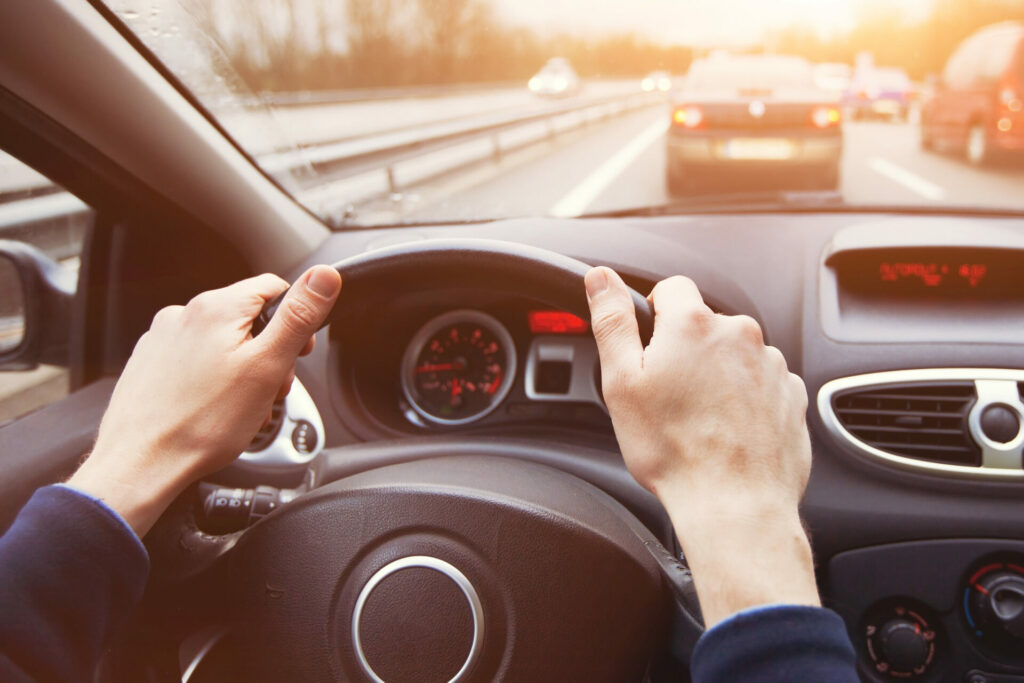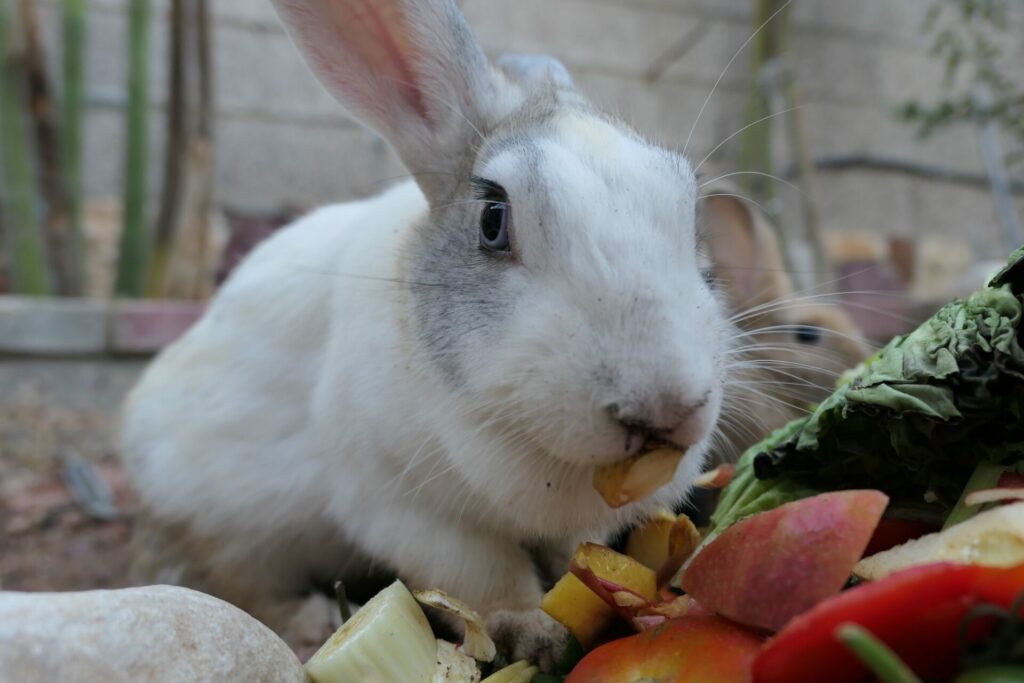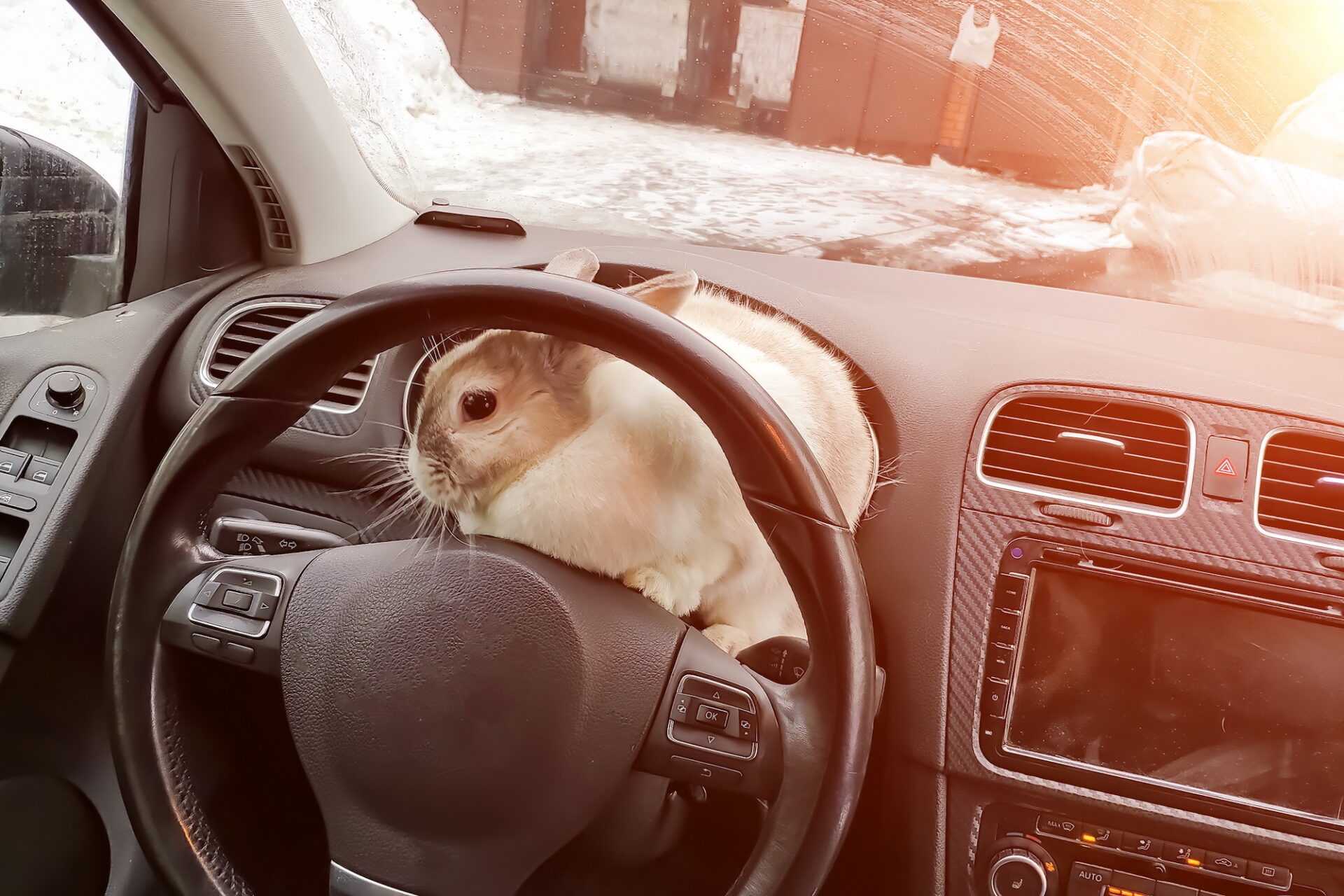No, rabbits don’t like car rides – although they’ll tolerate them when they have to. The general advice here is to only take your rabbit in the car when it’s unavoidable (like a trip to the vet or when you’re moving house).
Read on to find out why rabbits don’t like car rides – as well as some tips for how to travel if you absolutely have to go somewhere with your rabbit in the car.
Why Rabbits Don’t Like Car Rides

There will be some exceptions, but the vast majority of rabbits won’t be impressed with a car ride.
Your rabbit might not like traveling in the car because:
- The temperature: Rabbits are at risk of heatstroke when traveling in the car if the temperature is high. This can be fatal and should be avoided at all costs.
- Dehydration: Rabbits won’t like drinking on a car journey. This means that you’ll need to make sure that you stop regularly for water breaks. You should also make sure they’ve been drinking before the journey.
- Starvation: Rabbits won’t like eating in the car. If they go too long without any gut movement, then they’re at a high risk of developing gastrointestinal stasis. Make sure there’s some food in the carrier with them and schedule stops on the journey to give them a quiet moment to snack.
- Anxiety: There are many anxiety-inducing aspects to car rides. A rabbit’s senses can be quickly overwhelmed, leaving them trapped in a frightening and stressful place with no option to run to safety.
- Leaving their safe territory: As territorial animals, rabbits usually have a safe place that they’ve claimed as their own and they won’t appreciate being taken away and put in a scary, unfamiliar car that’s full of strange smells, noises, and movement.
If You Do Have to Take Your Rabbit in the Car

On the occasions where car rides are unavoidable, there are a few things you can do to make the journey as comfortable, safe, and least stressful as possible.
You could:
- Get a good carrier: It shouldn’t smell of any other pets or be made of a material that rabbits can chew through. It should be something you can secure and carry easily. Let your rabbit get used to it before you travel, and place it in the footwell behind the passenger seat during the journey.
- Enlist a second person: If there’s someone else who your rabbit trusts, or someone who can drive you, having one person comforting your rabbits and sitting in the back with them will be a huge comfort to the rabbit.
- Plan regular breaks: To check on your rabbit, offer them food and drink, and break up the bigger journey. This also allows you to monitor their health if they start developing any symptoms or signs of a problem.
- Put a favorite toy or blanket in the carrier: This will provide comfort, and maybe even distract them on the journey. If the blanket smells of home too, that will be a bonus source of comfort.
- Bring their favorite treats: Not only will a tasty treat show your rabbit that everything is okay and build an association between car journeys and positive experiences, but it’ll usually tempt even the most stubborn rabbit into eating.
For a more in-depth look at car travel, including whether rabbits get car sick and car safety travel tips, check out this article.
How to Drive With Your Rabbit in the Car

Here are a few tips if you need to take your rabbit somewhere in a car:
- Play calming classical music on a low volume or just turn the radio off entirely.
- Keep the windows up to sound-proof as much as possible.
- Turn the heater off, to stop any overheating. If you want to go a step further, you could get some window blinds to block sunlight and have the A/C on low. It’s unlikely that your rabbit will get too cold, but you’ll need to make sure that no vents are blowing cold air directly on them.
- Plan your journey in advance so you can take the shortest, easiest journey.
- Pack extra supplies – food, drink, hay, and anything else you might need en route. It’s always a good idea to have more than you need in case there are unexpected delays.
As always, pay attention to your rabbit’s behavior and cues. You’ll know your rabbit the best and recognize if anything is wrong.
And once you’re home and the journey is over, monitor your rabbit to make sure that they’re eating, drinking, and going to the toilet as normal. Giving your rabbit lots of attention and love will help them relax after the journey too.
